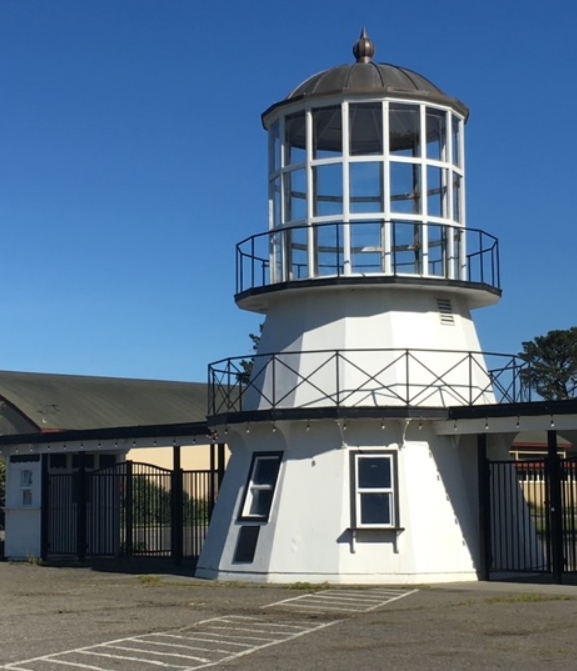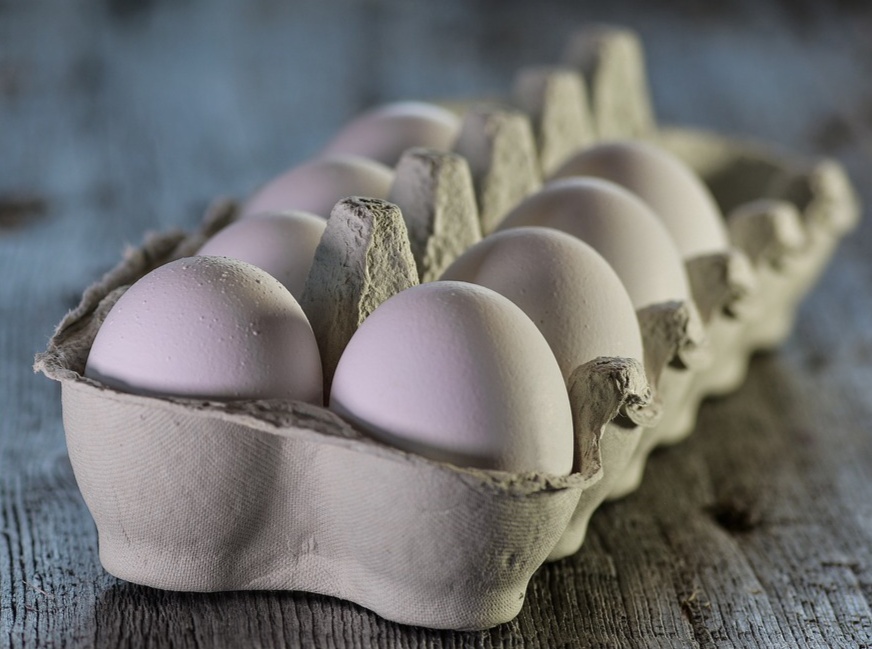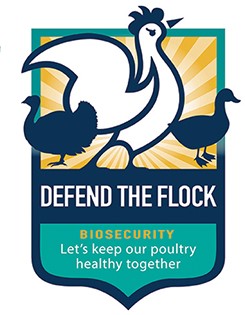2020-08-21: Avian Science Notes August Newsletter
University of California - Cooperative Extension
August 2020 (On-line version)
The Avian Science Notes Newsletter (current and back issues) written by Dr. Francine Bradley, Extension Poultry Specialist Emerita from UC Davis, is ALWAYS available at: https://avian.ucdavis.edu/
2020-08_AVS_notes_online2_0.pdf (Here is the full pdf version.)
_____________________________________________________________________________________
The readership of this Newsletter is extremely varied in terms of poultry experience and time in 4-H. Therefore, in each Newsletter I will try to include poultry 4-H news that should be of interest to all, information on ordering resource material that should be in the hands of all 4-H poultry families, and then Project Meeting ideas.
IN THIS ISSUE:
NEWS
HOW CALIFORNIA FAIRS AND FAIRGROUNDS HAVE BEEN IMPACTED BY COVID-19
EGGS TO THE RESCUE
REMEMBERING TWO GREAT FRIENDS OF 4-H POULTRY
YET ANOTHER DISEASE WORRY – HIGHTLY PATHOGENIC AVIAN INFLUENZA (HPAI)
RESOURCE MATERIALS
MEETING IDEAS
PHOTO CONTEST
CALIFORNIA ANIMAL HEALTH & FOOD SAFETY (CAHFS) LABS
________________________________________________________________________
NEWS
What is in store for Fairs and events on fairgrounds in 2021? How you can help.

Just when the tragic virulent Newcastle Disease (vND) quarantine came to an end and hopes were high for a “normal” late 2020 and a great 2021 show and fair season, along came COVID-19. I think at this point, most people have written off 2020 in terms of normal fairs or shows. In fact, one of the calendar year’s earliest fairs, the Riverside County Fair and National Date Festival, has already been cancelled for NEXT year - 2021. If life, including poultry shows and fairs, is to get back to normal, we all need to be doing the correct things. Just as I always urge you to practice the best biosecurity with your birds, you must do the best when it comes to personal biosecurity and biosecurity for your family.
Please, please follow all the COVID-19 guidelines. You might even want to make a list and see how poultry biosecurity practices can be adopted to keeping you and your family safe from this human coronavirus.
HOW CALIFORNIA FAIRS AND FAIRGROUNDS HAVE BEEN IMPACTED BY COVID-19
As many of you know (if you have been faithfully checking the List on this website) many of the 2020 California fairs have been cancelled.

When urging citizens to socially distance, holding a normally crowd-filled fair did not seem prudent. Of course, many of our fairgrounds are financially dependent on the revenue from other events held throughout the year on fairgrounds. In a recent Ag Alert article by Ching Lee, the CEO of the Nevada County Fair projected catastrophic losses for the year. Patrick Eidman said the Fair had original rental revenue projected at $2.7 million. However, due to the pandemic, he felt the Fairgrounds would be lucky to bring in 10% of that amount!
As many of you are aware, the cancellation of the local fair typically resulted in the cancellation of the normal junior livestock auction. Some fairs have been creative and were able to host virtual junior livestock auctions. One such fair was that in Sacramento County. Many of these virtual auctions have been quite successful. In the same article, C. Lee reported very positive observations made by Ken Mitchell. The latter said he noted new bidders and bidders from different backgrounds. Some of these people never knew they could buy auction animals at their county fair. So there may be value in continuing the virtual auctions or a hybrid of live and virtual auctions, post-pandemic. Mr. Mitchell is a second generation turkey rancher and long-time 4-H supporter. We thank him for finding the silver lining in all of this!
EGGS TO THE RESCUE
A biopharmaceutical research and development company in Germany, IgNova, recently filed a most exciting patent application. The application covers the use of passive immunization to control SARS-CoV-2 human infections. The company immunizes chickens (chickens do not get COVID) against the virus. The hens in turn produce antibodies to the virus and these can be extracted from the eggs. IgNova has a track record of being able to extract such antibodies and incorporate them into mouth spray, mouth wash, and mints.

REMEMBERING TWO GREAT FRIENDS OF 4-H POULTRY
In the last few months, the poultry fancy and 4-H Poultry in California lost two wonderful people. Dennis McDonald passed away in June. Readers who have been involved in poultry for some time will remember Dennis as the joke-telling, retired Los Angeles Police Department officer. Dennis was already a 4-H Poultry Leader in the late 1980s. He and his wife had retired to El Dorado County and soon were deep into 4-H and raising Speckled Sussex, Black Australorps, and Emdens at Ol’ McDonald’s Farm. Dennis gave decades to his 4-Hers and the El Dorado County Fair. In his last years, he was not physically able to attend shows and greatly missed interacting with his friends in the fancy.
Very recently came the news that Doris Galewick had died at 90. Mrs. Galewick was a teacher and 4-H Poultry Leader in Shasta County. Many will remember that she showed under the name “Galewick’s Gorgeous Bantams.” She was the consummate teacher. Her 4-Hers learned not only content material, but how to behave in a professional manner. Judging Showmanship classes, I could always identify a showman trained by Doris Galewick. The showman would be in a spotless, complete 4-H uniform, know his/her bird and the American Standard of Perfection, speak clearly, and be extremely polite.
One of Mrs. Galewick’s former 4-Hers is Leeann Stearns. During Mrs. Galewick’s later years, Leeann was her designated poultry driver, accompanying her to many poultry shows. As long as she was able, Mrs. Galewick continued to promote the fancy through her outreach for the APA/ABA Youth Programs and as a Poultry Health Inspector (PHI).
YET ANOTHER DISEASE WORRY - HIGHLY PATHOGENIC AVIAN INFLUENZA (HPAI)
After 6 years of freedom from HPAI, Australia has recently reported 2 cases. Both were in free-range flocks of chickens. Important to you as backyarders, is to re-read the last sentence for the type of housing: FREE-RANGE. This means that the birds were roaming in areas lacking a solid covered top. The source of infection is believed to be wild birds.
As I always remind you, if you do not have your birds confined in a proper pen with a solid top, your birds are extremely vulnerable to wild birds and what they may drop onto your birds: feces, contaminated feathers, and parasites. California is in a sensitive geographic position because we are on the Pacific Flyway. Historically, cases of significant and catastrophic poultry infections have been traced to migrating birds flying over and/or landing among improperly housed poultry.
HPAI is what USDA calls a “reportable disease.” It is treated the same way as vND. That means if your birds become infected the government must kill them (of course, the disease may kill your birds before any agency arrives). Therefore, protect your birds now. Keep them in barns, pens, or coops - all constructed so wild birds and their droppings have no access to your flock.
_________________________________________________________________________________
RESOURCE MATERIALS
If you are in the Poultry Project and are able to own birds, you will undoubtedly want to enter Poultry Showmanship competitions at your local field days, county fair, and/or open poultry shows. There is a national standard for the manner in which poultry showmanship is to be conducted. While I wrote the National Standard, it was adopted by the Poultry Extension Specialists from across the country. So no matter if you are in California or Alabama, the showmanship competition should be conducted according to the National Standard.
The publication that describes the entire competition (along with photos) is only available on-line. The pathway for downloading free copies of 4-H Poultry Showmanship - National Standard is as follows. Go to: http://anrcatalog.ucanr.edu/
Click on 4-HYD, then click on 4-H STEM. Next step is to click on 4-H Raising Animals and finally to scroll down to the Showmanship Publication.
If you are in the Poultry Project (and even if you cannot own birds) you will want to get involved in Avian Bowl Competitions. Avian Bowl is a team sport and one that I, Dr. Ralph Ernst, and the late John Emo developed years ago. Doing well depends on knowledge of the official Avian Bowl Study Manual (only certain sections used each year) and speed in answering. Think of it as Poultry Jeopardy, but you don’t have to frame your answer in the form of a question!
Leaders and parents: while the Manual costs $15, it is laden with information that will help you with general management of poultry, game birds, and pet birds. In normal years, Avian Bowls take place around the state, at county fairs and open poultry shows. There is a annual State Qualifier with Bowl games for Juniors and the Senior Bowl selecting the State Champion team that will represent California at the 4-H National Poultry and Egg Conference in Louisville, Kentucky. In addition, the Manual is a great resource when planning project meetings and/or activities just for the 4-Hers in your family (see “Meeting Ideas” in this issue).
I have my colleague, Dr. Mickey Hall, print the manuals at her institution. Clemson University has an excellent printing division and very efficient staff. To order the National Avian Bowl Manual, contact:
Clemson University, Bulletin Room – Room 82
96 Poole Agricultural Center
Clemson, SC 29634-0129
Cost per packet is $15.00 (includes first class shipping)
(864) 656-3261 (phone); (864) 656-0742 (fax); Attn: Mick Smith
Payments cannot be made by check.
The following link can be used to purchase National Avian Bowl manuals, using a credit card: http://shopping.clemson.edu/. When the Clemson Shopping pages comes up, enter Man161 (NO spaces between the alpha and numeric) in the Search Products Box.
MEETING IDEAS
There are many items in the daily news that can be linked to more in-depth information in the Avian Bowl Study Manual. For example, in the “News” section of this issue there is an item entitled “Eggs to the rescue.” It discusses how hens are being used to produce eggs containing antibodies against the SARS-CoV-2 virus. For a meeting, you could start by reading this section to the members (who have been instructed to bring their complete Avian Bowl Manual to the meeting). Then ask them to find as many entries as they can in the Manual, that relate to this topic. Leader tips: look in the Eggcyclopedia under “Uses - medical,” and under “Vaccine,” as well as in the Fact Sheet - “Contributions of Poultry to the Development of Science.”
Have some small prizes for the first member to find an acceptable entry. Another prize could go the member finding the most entries, etc. But, of course, you should tie this all together with a good discussion. Some discussion topics might include:
How long have poultry been used in research that aided with human health?
What is immunity?
What would be the advantage(s) of offering the antibodies in mints as opposed to vaccinations?
Another item in this issue’s News section dealt with HPAI.
Do not overlook items that you may hear during the weather segment of the nightly news. For example this August 10th, 100 mph winds raced through Iowa. Deven King, the Managing Editor of “Egg Industry,” stated that there were no reports of poultry farm losses. She repeated the analysis of the Gov. Reynolds, who estimated that 10 million acres of Iowa farmland was flattened. Ms. King’s article repeated multiple reports indicating that 43% of Iowa’s corn and soybean crops were damaged. Iowa’s Agriculture Secretary was quoted as saying that “Tens of millions of bushels of commercial grain storage and millions of on-farm grain storage was impacted, destroyed or severely damaged.”
You can repeat the above exercise with this topic. Leader tips: look in Eggcyclopedia under “Avian Influenza,” and in the Fact Sheets - “Biosecurity” and “Avian Influenza.”
You can also send members home with the assignment to keep track of current news items they read and/or hear that are related to poultry. Ask them to keep a list that they can share and discuss at your next meeting.
For a Club meeting, you could repeat the exercise described at the top of this section. Leader tips: look in the Avian Bowl Manual in any of the sections dealing with the production of poultry and game birds: “Raising a small flock of turkeys,” “Growing blue ribbon pullets,” Raising the home chicken flock,” and “Raising Game Birds.” In the Feeding section of each, there will be references to the major ingredients of poultry feed. See how many references to “corn” and “soybeans” members can find in the Manual. Discussion topics could include: If there were no reports of significant poultry death in this storm, why would Iowa poultry farmers be concerned? If the Iowa grain crop is damaged, how could poultry feed prices be impacted (see if any member comes up with Avian Bowl reference to “supply and demand”)? How could the reduction in number of working silos (grain storage buildings) influence where and how grain farmers store their crops this year?
_________________________________________________________________________________
PHOTO CONTEST
The next issue of AVS Notes will feature Food. While we have all been spending more time at home, many of us have been experimenting with new ways to prepare dishes. You are invited to send your best photo that involves the preparation of an egg or poultry dish that you have been enjoying during the pandemic. Along with the photo, please send a caption identifying WHO is pictured and WHAT egg/poultry dish is being prepared.
The photo must be sent in this format: jpeg/jpg (high/original resolution)
To: David Emery <davemery@ucdavis.edu>
Deadline: Sept. 15, 2020
The best entries will be selected and included in the next issue. The winners will be able to list “photo credit” in a UC Newsletter, in their Record Books, college applications, etc.
Poultry Health Services for Backyard Flock (BYF) owners through the CALIFORNIA ANIMAL HEALTH & FOOD SAFETY (CAHFS) LABS
CAHFS is an important part of the University of California. The CAHFS system operates diagnostic laboratories throughout the state, with the flagship lab on the UC Davis campus. Any BYF owner can directly submit a chicken, turkey, duck, goose, or swab to the Lab. There is a $20 necropsy fee for BYF cases consisting of 1-2 birds from flocks with less than 1,000 birds.
The staff veterinarian who will handle your case will be a trained Poultry Diagnostician. This type of training and poultry expertise is not found at the majority of small animal veterinary clinics. You must remember that CAHFS is NOT a treatment facility. You do not take a sick bird there to be examined and then taken home. All birds entering the Lab, are humanely killed (if not already dead) and examined to determine the cause of the illness. While none of us likes to lose a single bird, it is often necessary to give up one bird, in order to save the remainder of the flock.
For a full listing of CAHFS locations and answers to frequently asked questions, please visit their website: https://cahfs.vetmed.ucdavis.edu/
CALENDAR
2020
Sept. 15 – Deadline for Egg/Poultry dish photo contest (see previous page for details)
Questions: Dr. Bradley 760 699-5078
Dr. Francine A. Bradley, Editor
Extension Poultry Specialist
1775 East Palm Canyon Dr.
Suite 110 - #129
Palm Springs, California 92264
